Original Pearl Krabs, Dr. Tagai Lilac

Apart from illness, what is the main cause of disability among children and adolescents?
The answer may surprise many people-
According to the report of the World Health Organization, the most important factor that causes illness and disability among teenagers is actually depression.
According to surveys and statistics, about 20% of children and adolescents worldwide have experienced depressive symptoms.
In China, this ratio is also close to the international level.
"Children have nothing to be depressed about? 」
"Don’t worry about food and clothing, what’s not happy? 」
Even if there are more and more news about depression among minors in recent years, many people still can’t accept it. Children are also depressed, and more and more surveys have confirmed that depression among children and adolescents is by no means an individual phenomenon. Its popularity is far beyond our imagination.
One out of every five children has depressive symptoms.
A study published in 2018 showed that the proportion of children and adolescents with depressive symptoms in China was 19.85%, and even reached 23.7% among children and adolescents in the central region.
That is to say, in China, one in every five children may have depressive symptoms.
Moreover, with the increase of age, the proportion of children and adolescents with severe depressive symptoms is also increasing.
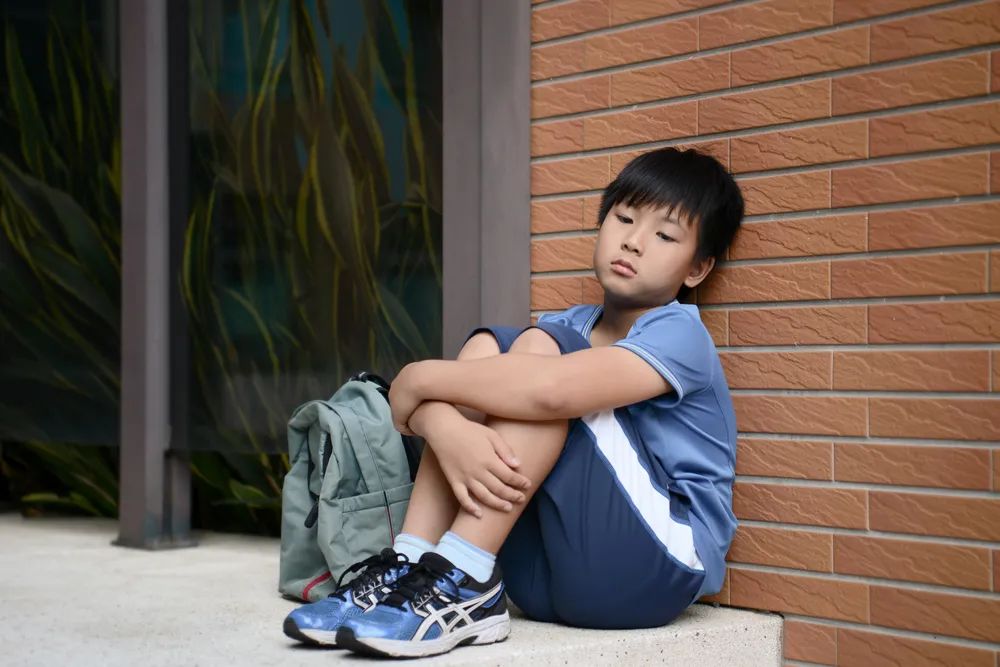
Image source: Station Cool Hailuo
According to the National Mental Health Report (2019-2020) issued by the Institute of Psychology of Chinese Academy of Sciences, the detection rate of severe depression is only 1.9% ~ 3.3% among children in grades four to six of primary school, but among children in junior high school, the proportion rises to 7.6% ~ 8.6%.
Among high school children, the detection rate of severe depression is as high as 10.9% ~ 12.5%.
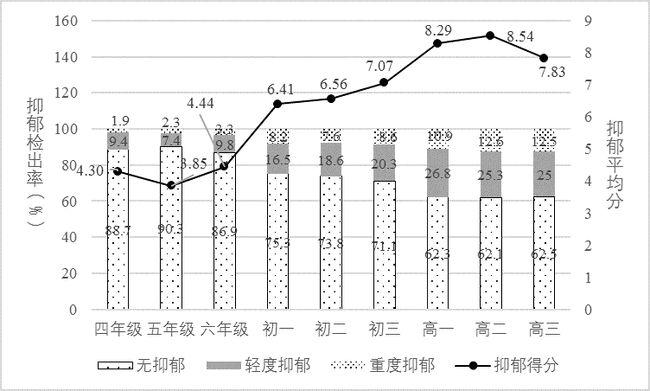
Image source: National Mental Health Report (2019-2020)
The survey also found that compared with primary school children, junior high school and senior high school children have higher average scores of depression and more serious overall depression.
However, along with the high detection rate and high depression level, there are extremely low medical visit rate and obvious delayed treatment.
A survey in the United States found that only 30% of minors with depressive symptoms were receiving treatment.
We didn’t find statistics on the proportion of children and adolescents in China, but in clinic, doctors found that it often takes one or two years from the time when children and adolescents appear symptoms to receiving treatment.
In other words, when the symptoms of depression first appear, it is difficult for children themselves, parents and teachers to realize that this is depression and seek help and medical treatment in time.
To a great extent, this is due to the depressive symptoms of children and adolescents, which are often not so typical.
Second, less typical symptoms of depression:
Rebellion, headache, stomachache
Different from the symptoms of adult depression, children and adolescents often have different manifestations of depression, and these manifestations are often misunderstood as other problems.
The child’s cry for help was ignored either rudely or carelessly.
1. Big temper and adolescent rebellion? No, it may be a symptom of depression.
Some studies have found that, unlike the common depression of adults, depression of minors is accompanied by impulsiveness and irritability, which seem less "depressed".
A follow-up survey of more than 1,400 minors found that 41.3% of the children diagnosed with depression showed irritability.
Moreover, boys seem to express their depression more often by losing their temper-73% of these irritable children are boys.
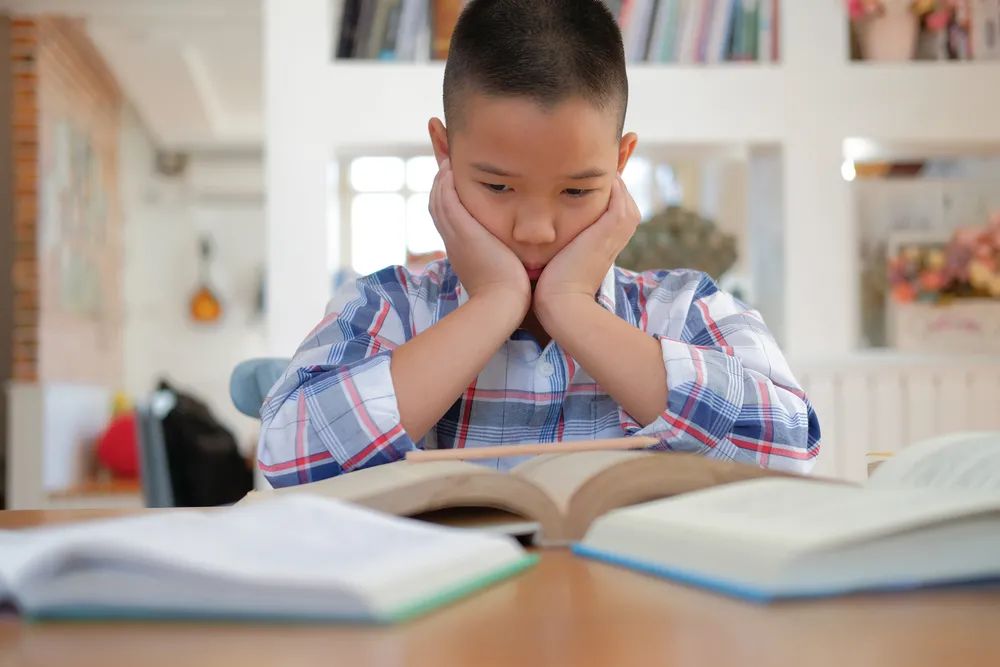
Image source: Station Cool Hailuo
2. Declining grades and not attending classes well? This may also be a symptom of depression.
Declining academic performance is also a common manifestation of depression in children and adolescents. Depression will affect children’s attention and energy, making it difficult for them to concentrate, doze off, or feel that they don’t understand, leading to a decline in their grades.
Some depressed children will show difficulties in going to school. For example, being late frequently, always failing to bring what you need for school, cut class or refusing to go to school, etc.
Many psychologists have found that depression is the emotional problem most closely related to school difficulties-children with school difficulties usually have obvious depression, and the greater the difficulties, the more serious the depression.
3. Always have a headache and stomachache? This may not be just a physical problem.
Another most common but easily overlooked manifestation of depression is the physical discomfort of children and adolescents.
Because children and adolescents are still in the mental growth stage, their ability to perceive emotions is not perfect. Compared with adults, it is more difficult for them to express emotions accurately and clearly. Therefore, emotions can often be released through physical reactions.
Complaining about physical discomfort is also the most commonly used way for children and adolescents to seek help when they experience depression.
According to the survey, children who come to pediatrics for various pains often have depressive symptoms.
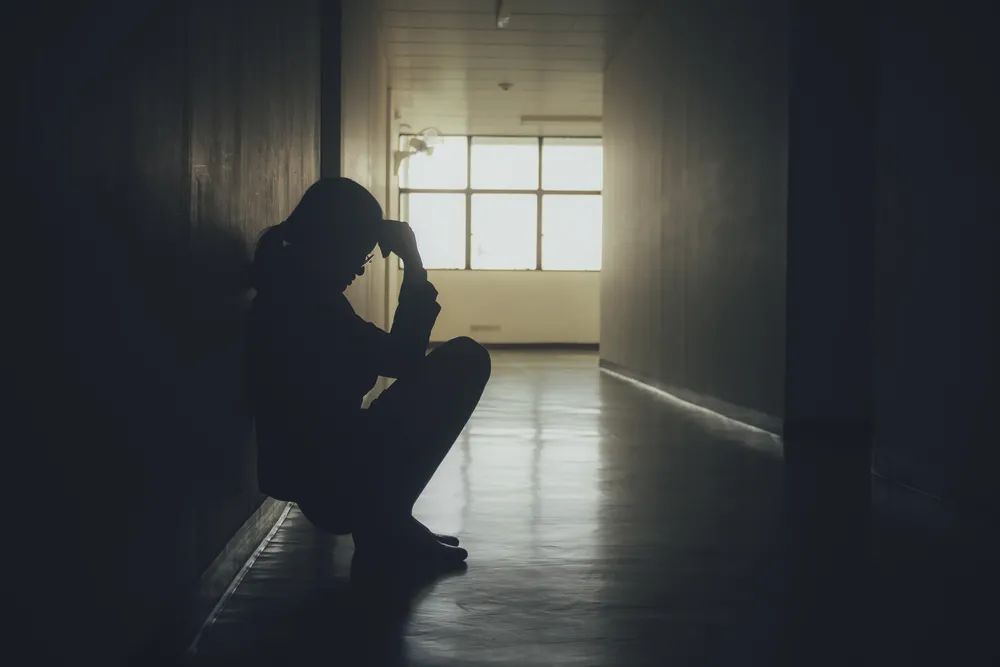
Image source: Station Cool Hailuo
The most common is headache.
The survey found that one-third of children and adolescents who said they had headaches had the characteristics of depression; Of those children who were diagnosed with depression, 42% had a headache.
Children and adolescents who often complain about abdominal pain also have a high risk of depression.
The study found that when children feel abdominal pain every day, their risk of depression is close to 50%.
Compared with healthy children, children with depressive symptoms feel abdominal pain at a significantly higher frequency and intensity. Some researchers even suggested that abdominal pain is one of the most obvious differences between depressed children and healthy children.
In addition, dizziness, insomnia, loss of appetite, always feeling cold, allergies, etc. are all common physical symptoms of depressed children and adolescents.
However, in life, these symptoms are often not regarded as signals of depression, but lead to delayed treatment of depression. Parents spend a lot of energy to take their children for physical examination, but they don’t realize that these discomforts may be caused by psychological factors.
Studies have also shown that physical symptoms can lead people to lose sight of the truth behind depression: patients with physical symptoms usually experience a longer course of disease, receive less correct treatment and have a worse prognosis.
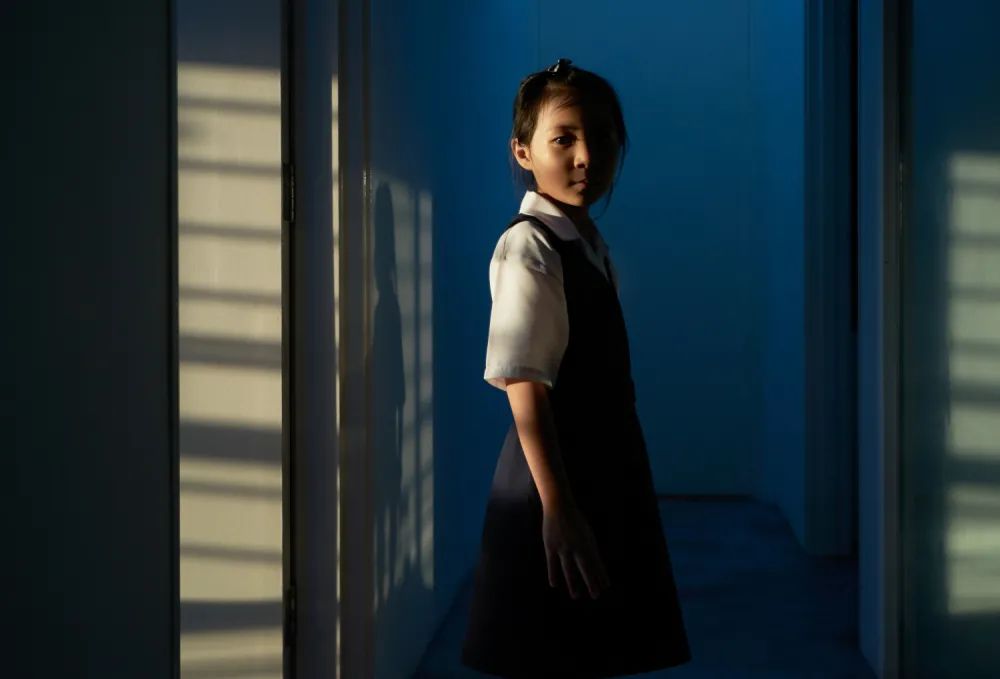
Image source: Station Cool Hailuo
In addition, the variability of children and adolescents’ depressive symptoms also increases their difficulty in identifying depressive symptoms.
The study found that:
When preschool children aged 3 ~ 5 are depressed, they may obviously lose interest in games;
Children aged 6-8 years may show more physical symptoms and complain about their discomfort; Or often shout and cry too much;
Children aged 9-12 are more likely to have low self-confidence, self-blame and run away from home.
Teenagers aged 12-18 will show academic problems or make reckless and reckless behaviors.
Because of such atypical and varied changes, people around you need to pay enough attention and sensitivity if they want to find the symptoms of depression in time.
But unfortunately, this concern and sensitivity may be exactly what children who suffer from depression lack in their lives. Even this lack increases their risk of depression.
Third, the "strict" education model in East Asia,
It is highly correlated with depression of minors.
Many parents feel that their children have nothing to think about, and it is impossible to be depressed without the pressure of food and clothing. All problems are problems of attitude and behavior.
"Look who they are, don’t they …"
"Find the reason from yourself."
Clinically, there is a phenomenon that many children who are considered to be "problematic" are almost cured in the hospital, but relapse soon after returning home. They are cured in the hospital and relapse again after returning home. This puzzled many psychiatrists and psychologists.
After long-term research, people gradually realize that it is never outsiders who have the greatest influence on children’s psychological state, but family members of children-the most common ones are parents.

Image source: Station Cool Hailuo
Many studies have found that the parenting style of parents is related to the possibility of depressive symptoms in children. For example, parents who always make demands on their children, but rarely show warmth and love, are more likely to have depressive symptoms.
Moreover, the research on children in China also found that parents’ physical punishment and psychological control will also increase the possibility of children’s depression-those children who are physically punished by their parents, or who are often humiliated, scolded or treated coldly by their parents are obviously more likely to have depressive symptoms.
When faced with problems or challenges in the future, they will also feel that a good life is not worthy of them, and a bad state is destiny takes a hand, so it is easy to give up their struggle and let themselves sink in negative emotions.
But it is a pity that many children are still very strict with their parents even though they have been diagnosed with depression.
This falls on the awareness, diagnosis and treatment of psychological symptoms, which may bring irreparable consequences.
Psychologists have pointed out that children’s beliefs about themselves and the world are initially established by getting along with their parents.
Children who have been loved and cared for by their parents will feel that they deserve to be loved and that life is at least worth looking forward to. When they are under pressure, they can believe that they won’t always be in the trough and deserve a better life, so they will see more possibilities and resources in the current situation and be more likely to get out of the predicament.
But if a child is often rejected and denied by his parents, especially if he sees that other children can be cared for by their parents, he will feel that he is not cared for because he is not good enough to be loved.
What we hope is that every individual’s psychological state and emotional needs are given due attention, and we hope that every child struggling in depression can be treated with gentleness.
references
[1] Chen Xuefeng, Zhang Kan, Fu Xiaolan, Chen Zhiyan and others (2021). Report on the Development of National Mental Health in China (2019-2020). Beijing: Social Science Literature Publishing House.
[2]American Psychiatric Association, & American Psychiatric Association. (2013). DSM 5. American Psychiatric Association, 70.
[3]Bohman, H., Jonsson, U., Von Knorring, A. L., Von Knorring, L., Päären, A., & Olsson, G. (2010). Somatic symptoms as a marker for severity in adolescent depression. Acta Paediatrica, 99(11), 1724-1730.
[4]Depression Symptoms in Teens: Why Today’s Teens Are More Depressed Than Ever. (n.d.). https://discoverymood.com/blog/todays-teens-depressed-ever/
[5]Forrest, A. J., & Wolkind, S. N. (1974). Masked depression in men with low back pain. Rheumatology, 13(3), 148-153.
[6]Gao, J., Li, Y., Cai, Y., Chen, J., Shen, Y., Ni, S., … & Tao, M. (2012). Perceived parenting and risk for major depression in Chinese women. Psychological medicine, 42(5), 921-930.
[7]Gasquet, I., Chavance, M., Ledoux, S., & Choquet, M. (1997). Psychosocial factors associated with help-seeking behavior among depressive adolescents. European child & adolescent psychiatry, 6(3), 151-159.
[8]Geerlings, S. W., Twisk, J. W., Beekman, A. T., Deeg, D. J., & van Tilburg, W. (2002). Longitudinal relationship between pain and depression in older adults: sex, age and physical disability. Social Psychiatry and Psychiatric Epidemiology, 37(1), 23-30.
[9]Gonzálvez, C., Kearney, C. A., Jiménez-Ayala, C. E., Sanmartín, R., Vicent, M., Inglés, C. J., & García-Fernández, J. M. (2018). Functional profiles of school refusal behavior and their relationship with depression, anxiety, and stress. Psychiatry research, 269, 140-144.
[10]Lewis, D. W., Middlebrook, M. T., Mehallick, L., Rauch, T. M., Deline, C., & Thomas, E. F. (1996). Pediatric headaches: what do the children want? . Headache: The Journal of Head and Face Pain, 36(4), 224-230.
[11]Liu, Y., & Merritt, D. H. (2018) . Examining the association between parenting and childhood depression among Chinese children and adolescents: A systematic literature review. Children and Youth Services Review, 88, 316-332.
[12]Ohayon, M. M., & Schatzberg, A. F. (2003). Using chronic pain to predict depressive morbidity in the general population. Archives of general psychiatry, 60(1), 39-47.
[13]Petito, A., Pop, T. L., Namazova-Baranova, L., Mestrovic, J., Nigri, L., Vural, M., … & Pettoello-Mantovani, M. (2020). The burden of depression in adolescents and the importance of early recognition. The Journal of pediatrics, 218, 265-267.
[14]Rao, W. W., Xu, D. D., Cao, X. L., Wen, S. Y., Che, W. I., Ng, C. H., … & Xiang, Y. T. (2019). Prevalence of depressive symptoms in children and adolescents in China: a meta-analysis of observational studies. Psychiatry Research, 272, 790-796.
[15]Sartorius, N. (2003). Physical symptoms of depression as a public health concern. Journal of Clinical Psychiatry, 64, 3-4.
[16]Stringaris, A., Maughan, B., Copeland, W. S., Costello, E. J., & Angold, A. (2013). Irritable mood as a symptom of depression in youth: prevalence, developmental, and clinical correlates in the Great Smoky Mountains Study. Journal of the American Academy of Child & Adolescent Psychiatry, 52(8), 831-840.
[17]Wallin, D. J. (2007). Attachment in psychotherapy. Guilford press.
[18]Youssef, N. N., Atienza, K., Langseder, A. L., & Strauss, R. S. (2008). Chronic abdominal pain and depressive symptoms: analysis of the national longitudinal study of adolescent health. Clinical Gastroenterology and Hepatology, 6(3), 329-332.
[19]Zou, P., Siu, A., Wang, X., Shao, J., Hallowell, S. G., Yang, L. L., & Zhang, H. (2021, May). Influencing factors of depression among adolescent Asians in North America: a systematic review. In Healthcare (Vol. 9, No. 5, p. 537). Multidisciplinary Digital Publishing Institute.
Plan and make
Co-expert: Pearl Krabs | Planning: Tagai | Producer: Feidi
Cover image Source: Station Cool Hailuo
Read the original text
关于作者